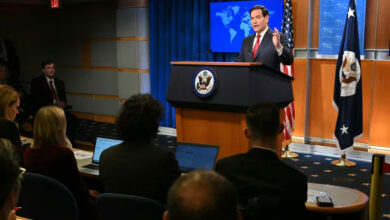
Some US officials had indicated in recent weeks that a so-called bridging proposal was being finalized for Biden’s approval before being shared with the other mediators involved in the ceasefire talks, such as Qatar and Egypt. However, according to these senior officials, the president’s advisers first want to have confidence that Hamas would be willing to eventually get to a “yes” on such an updated agreement – and they do not believe that desire exists.
A major sticking point in the negotiations has to do with the issue of the Palestinian prisoners who would be released in exchange for the hostages kidnapped by Hamas on October 7. Hamas recently demanded that life-sentence prisoners be released in return for civilian hostages – a change from an earlier iteration of the talks, when the parties discussed such prisoners being released only in exchange for Israeli soldiers, those officials said.
US officials are largely pointing the finger at Hamas and its leader, Yahya Sinwar, for the impasse, saying it is unclear that he is interested in reaching an agreement at all. The recent execution of six hostages in Gaza – including one Israeli American – infuriated administration officials who have been intimately involved in the talks.
Meanwhile, there has also been growing skepticism in Washington about Israeli Prime Minister Benjamin Netanyahu’s political willingness to end the war. He has been emphatic about the deployment of Israeli troops along the Philadelphi Corridor once a ceasefire agreement goes into effect, even prompting some US officials to say that his insistence that Israel maintain control of the key land strip that runs along the Egypt-Gaza border has not been constructive.
Facilitating an end to the Israel-Hamas war before he leaves office is one of the most important foreign policy priorities for Biden. But as CNN previously reported, despite months of feverish work, there has been growing skepticism within the administration about whether a deal can be struck before the end of the president’s term in January.
Still, officials insist they are holding out hope and will continue to engage in negotiations, however dim the prospects of a ceasefire may appear at the moment.
Speaking to reporters last week, National Security Council spokesperson John Kirby declined to predict when the so-called bridging proposal might be ready – but insisted the administration is working “diligently” to make progress.
“The conversations are continuing,” Kirby said. “What’s not clear to us, certainly in the wake of the execution of those six hostages, is whether we’re going to be able to get there. What’s not clear to us is whether Hamas will ever be able to come to the table in sincerity and sign on to something.”
US Secretary of State Antony Blinken is the latest senior American official to travel to the region, returning to Egypt on Wednesday. But in an indication of how unlikely it appears that his trip will yield a major breakthrough on a ceasefire agreement, the trip will mark the first time since Hamas’ October 7 attacks that he will visit the Middle East without going to Israel.




